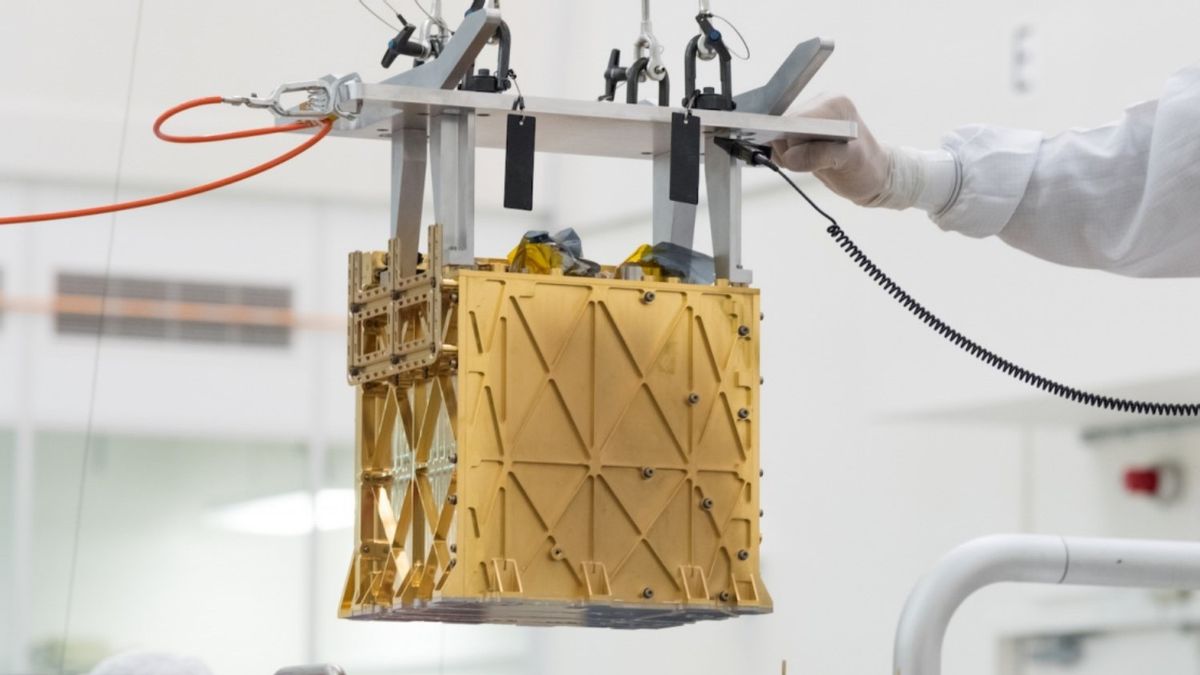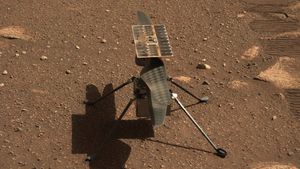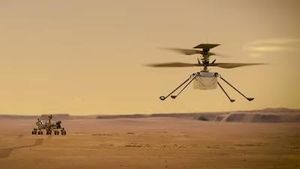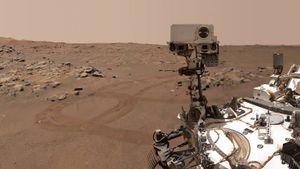JAKARTA – The Mars rover, Perseverance, was launched on July 30, 2020, aimed at studying the surface and looking for traces of ancient life on the Red Planet. On February 18, 2021, Perseverance successfully landed in Jezero Crater, Mars.
Scientists apparently did not just send the explorer for scientific purposes only. In fact, Perseverance also carries a small engine in it called MOXIE. The name MOXIE itself is an abbreviation of the Mars Oxygen In-Situ Resource Utilization Experiment. This mini machine is designed to make oxygen from carbon dioxide on Mars.
As is known, oxygen on Mars is rare, only less than 0.2 percent of the atmosphere. While oxygen is essential for future Mars missions as well as humans landing there. The American National Space Agency (NASA) itself has plans for the Mars Sample Return mission, which is the first rocket launch from the planet Mars.
The plan doesn't mean it doesn't have challenges. Because rockets need not only fuel to launch, they also need an oxidizer to allow that fuel to burn. On Earth, there is plenty of oxygen in the atmosphere to act as an oxidizing agent. But on Mars, we have to find a way to make oxygen to launch rockets and for humans to visit.
To achieve this, NASA and other space agencies are trying an approach called in-situ resource utilization, which means using materials available on Mars to make what we need. MOXIE will take Mars carbon dioxide and turn it into oxygen.
VOIR éGALEMENT:
How MOXIE Works, Oxygen Making Machine
In an article recently published in the journal Science Advances, the scientists and engineers behind MOXIE explain how MOXIE has worked since the Perseverance rover arrived on Mars in February 2021.
The researchers reveal that MOXIE has worked as expected over seven trials, and has succeeded in producing oxygen both during the day and at night, and in the different seasons of Mars. The machine produces about six grams of oxygen per hour, fulfilling its goal and proving that it is possible to create oxygen on Mars.
"This is the first demonstration of actually using a resource on the surface of another planetary object, and turning it chemically into something that would be useful for human missions," said Jeffrey Hoffman of the Massachusetts Institute of Technology. "It's a historic (moment) in the truest sense of the word."
The MOXIE device on Perseverance only produces relatively small amounts of oxygen. If the device is upgraded, it could produce more oxygen for use in future Mars missions.
The current version is also designed to only operate occasionally, as there are very strict limits on how much power the device can use on the Perseverance explorer. Larger versions of this technology can run continuously, making oxygen around the clock.
MOXIE works like a fuel cell running in reverse, instead of using carbon monoxide and an oxidizer to produce carbon dioxide and electricity, you put in carbon dioxide and electricity, and then you get oxygen and carbon monoxide.
Researchers will continue to run MOXIE periodically to learn more about MOXIE, and to see if MOXIE can produce more oxygen during springtime which has high atmospheric density and higher levels of carbon dioxide in the atmosphere.
The presence of a machine that converts carbon dioxide into oxygen, MOXIE, is a breath of fresh air for Mars exploration missions that will be carried out in the future. For information, Perseverance is the next generation Mars rover after Curiosity. The Mars Perseverance rover was developed by the Jet Propulsion Laboratory for various NASA research purposes.
The English, Chinese, Japanese, Arabic, and French versions are automatically generated by the AI. So there may still be inaccuracies in translating, please always see Indonesian as our main language. (system supported by DigitalSiber.id)












